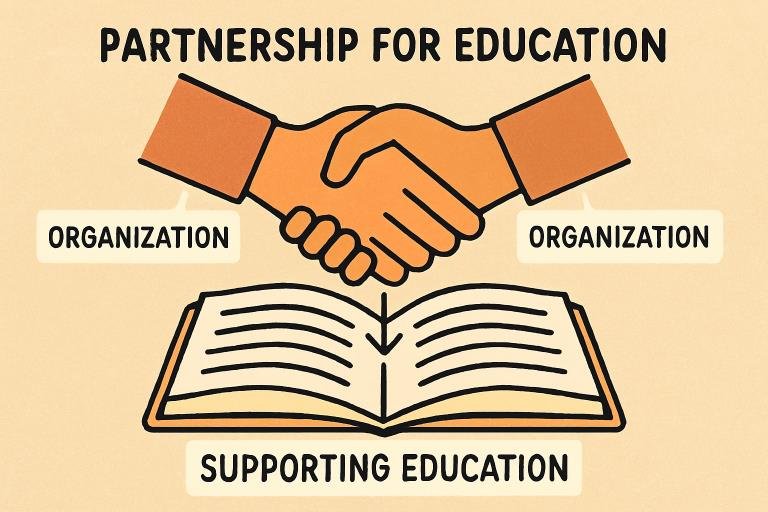Key Takeaways
- Foundations and non-profits are crucial in bridging education funding gaps and supporting school innovation.
- Collaborative approaches between organizations amplify impact and reach in educational settings.
- Strategic planning is necessary to maximize the effectiveness and sustainability of external support.
- Ongoing challenges include competition for funds, alignment of goals, and the need for sustainable funding solutions.
The Role of Foundations in Education Funding
Foundations enhance educational opportunities by providing targeted financial support. Their involvement often bridges persistent funding gaps, empowering schools and educational programs to realize innovation and establish new standards of academic excellence. These philanthropic organizations frequently invest in pilot initiatives that may struggle to gain traction with more traditional funding sources. By deploying their resources strategically, foundations help nurture transformative ideas and empower school leaders to serve a broader array of student needs.
Many families aiming to secure a brighter academic future for their children use specialized savings tools like a Registered Education Savings Plan RESP to plan and save for education costs. However, institutional support from foundations often determines whether groundbreaking educational programs can launch, scale, or sustain themselves over the long term. For instance, the William and Flora Hewlett Foundation has played a vital role in supporting initiatives focused on open educational resources, broadening access to high-quality learning materials for millions worldwide.
Non-Profit Organizations: Bridging the Funding Gap
Nonprofit organizations are uniquely positioned to identify educational disparities across communities and channel resources to those most in need. These organizations act as critical intermediaries between philanthropic donors and frontline educators by mobilizing donors and volunteers and leveraging community networks. Their holistic understanding of community challenges and donor priorities ensures that funding is deployed with precision and empathy.
Nonprofits frequently collaborate with other organizations—both within and outside of the education sector—to combine resources and knowledge, increasing efficiency and broadening their reach. These efforts address immediate classroom needs, such as instructional materials, and long-term systemic barriers related to equity and access. For example, the work of leading educational non-profits was vital during the COVID-19 pandemic, helping to provide digital devices and internet access for remote learning.
Collaborative Efforts Between Foundations and Non-Profits
Foundations and non-profits can partner to yield multifaceted solutions to educational challenges. By pooling resources and expertise, these organizations can launch comprehensive initiatives that would otherwise be beyond the reach of a single entity. This collaborative model fosters knowledge sharing that benefits the education ecosystem, enabling organizations to amplify their collective impact.
A well-coordinated effort can result in programs that address various aspects of education, from curriculum development and teacher training to student support and technology integration.
Strategies for Effective Utilization of Foundation Support
To harness the full potential of foundation and non-profit support, educational organizations should adopt a strategic, transparent, and results-driven approach:
- Identify Specific Needs:Conduct detailed assessments to prioritize areas where financial support will have the most impact.
- Develop Clear Objectives:Establish measurable goals and outcomes to guide program execution and enable ongoing evaluation.
- Foster Transparency:Keep donors, stakeholders, and the broader community informed about the allocation and impact of funds.
- Engage in Continuous Evaluation:Review and refine funded programs regularly to adapt to changing needs and emerging best practices.
Challenges in Securing Foundation and Non-Profit Support
While foundation and non-profit support can have a transformative influence, organizations must navigate several ongoing challenges. Competitive grant processes mean that not all deserving initiatives are funded. Alignment between the goals of a foundation and those of an educational institution is also critical; lack of alignment can lead to unproductive partnerships or missed opportunities.
Sustainability remains a significant concern, as overreliance on external funding may leave programs vulnerable if donor priorities shift or economic conditions change. Building diversified funding strategies and cultivating long-term, trust-based relationships with funders can mitigate these risks.
Future Outlook: Strengthening Partnerships for Educational Advancement
The future of educational advancement hinges on robust and adaptable partnerships between foundations, non-profits, and educational institutions. Growing interest in collaborative grantmaking, results-based funding, and technology-driven solutions reflects the sector’s commitment to driving innovation and equity. Investing in deep, cross-sector relationships will be essential to meeting new and evolving challenges within the education landscape.
As organizations strive for greater impact, a focus on continuous learning—both from successes and setbacks—will position them to respond creatively and effectively to the needs of students and educators everywhere.
Final Thoughts
Foundations and non-profit organizations remain pivotal drivers of positive change in education, providing the resources, vision, and collaborative spirit necessary to overcome today’s funding challenges. Their targeted support addresses immediate gaps and lays the groundwork for a more inclusive and high-quality educational ecosystem. By embracing transparency, strategic planning, and sustainable partnerships, education stakeholders can amplify the lasting benefits of external funding and shape a brighter future for learners everywhere.



